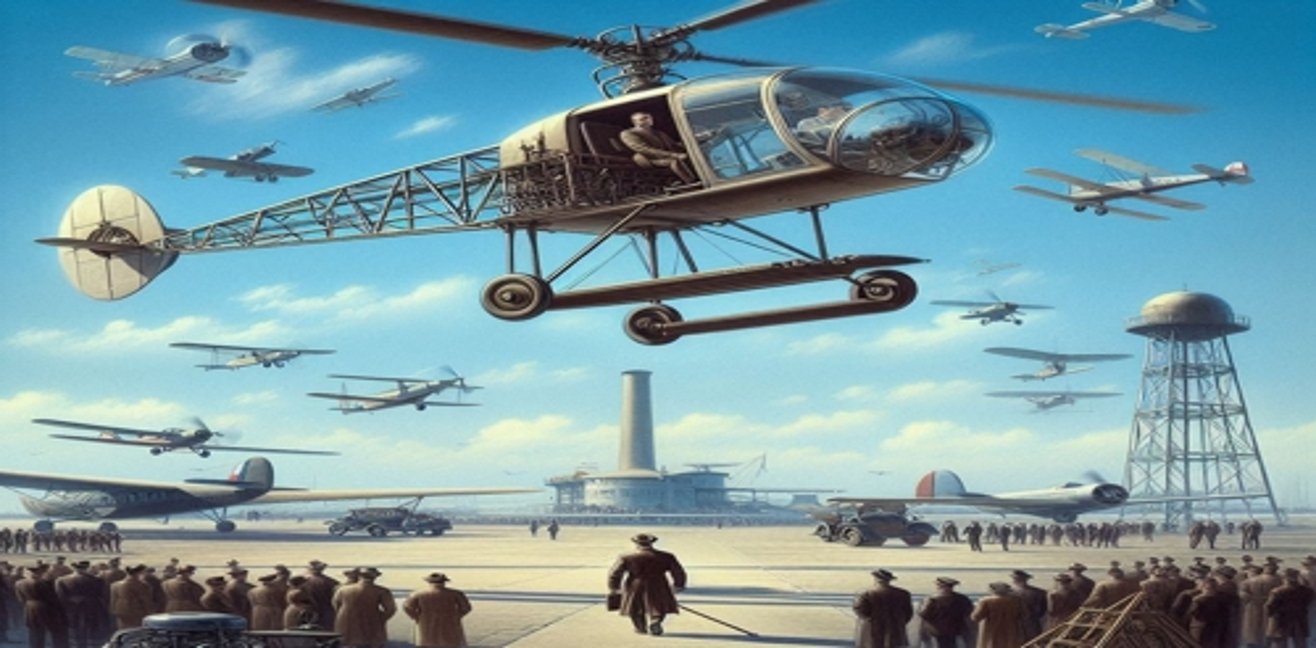On May 24, 1940, a groundbreaking achievement in the field of aviation engineering was made. Igor Sikorsky made his first successful flight with a single-rotor helicopter that he developed. This innovative design laid the foundation for modern helicopters and brought a new dimension to air transportation.
Who is Igor Sikorsky?
Igor Ivanovich Sikorsky was born on May 25, 1889, in Kiev, Ukraine. From a young age, Sikorsky developed a keen interest in flying and aviation. In 1908, at the age of 19, he tried to build his first helicopter prototype, but due to the technological limitations of the time, he was not successful.
In 1919, Sikorsky emigrated to the United States, where he continued his career in aviation engineering. Working on fixed-wing aircraft, he achieved many successful designs. However, his true passion was to develop an aircraft capable of vertical takeoff and landing.
VS-300: The First Successful Single-Rotor Helicopter
In 1939, Sikorsky introduced his prototype helicopter, the Vought-Sikorsky VS-300, which opened a new chapter in aviation history. The VS-300 was the first fully functional and controllable helicopter. With its three-bladed main rotor and a single tail rotor, this helicopter stood out for its ability to take off and land vertically.
The successful flight on May 24, 1940, showcased the potential of helicopter technology. The flight of the VS-300 revolutionized both military and civilian aviation. In the years following, Sikorsky continued to improve helicopter designs, achieving great success with more advanced models of the VS-300, including the R-4, R-5, and H-19.
Military and Civil Use of Helicopters
Sikorsky’s helicopter designs had a significant impact on military applications during and after World War II. Helicopters played a critical role in search-and-rescue operations, medical evacuations of wounded soldiers, and logistical support. The use of helicopters in the Korean War and the Vietnam War further demonstrated their importance in military operations.
In the civilian sector, helicopters began to be used for various purposes. From fighting forest fires to air ambulance services, transporting personnel to oil platforms, and urban air transportation, helicopters became indispensable tools in numerous fields. Sikorsky’s vision and work are considered one of the cornerstones of modern aviation, playing a key role in the development of helicopter technology.
Igor Sikorsky’s Legacy
Igor Sikorsky passed away on October 26, 1972. However, his legacy and innovative spirit continue to live on in the world of aviation today. Sikorsky Aircraft Corporation remains one of the world leaders in helicopter design and production. The principles Sikorsky developed are still highly significant in the design and use of modern helicopters.
The vertical takeoff and landing aircraft that Sikorsky dreamed of and achieved have saved millions of lives worldwide and played a critical role in the success of countless operations. His vision and engineering genius have been inscribed in aviation history in golden letters.
Conclusion
On May 24, 1940, Igor Sikorsky’s successful first single-rotor helicopter flight marked a turning point in modern aviation history. This achievement paved the way for the widespread use of helicopters in both military and civilian fields and expanded the boundaries of aviation. Sikorsky’s work revolutionized the fields of engineering and aviation, and his legacy continues to live on as one of the most important figures in aviation history.

